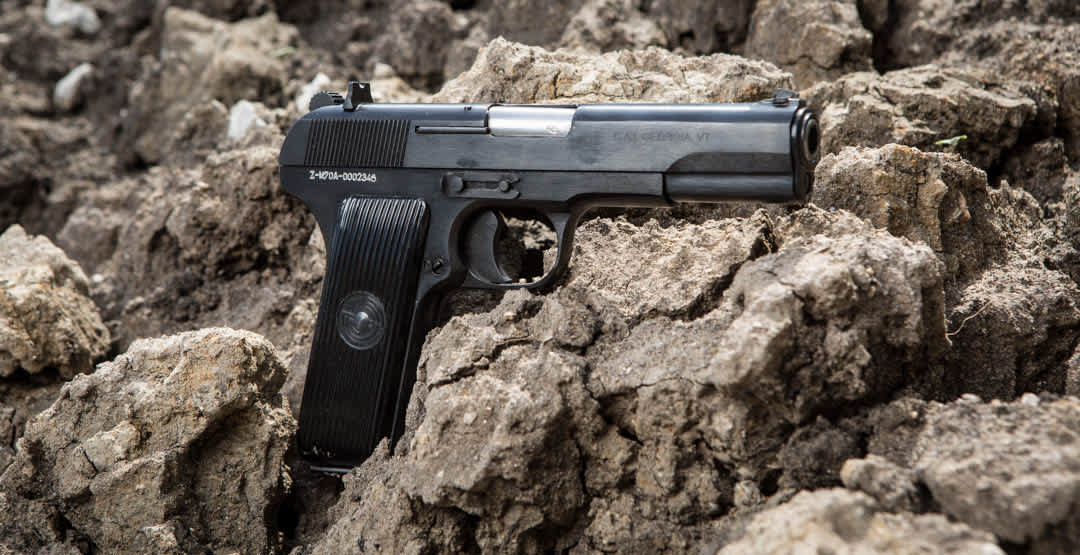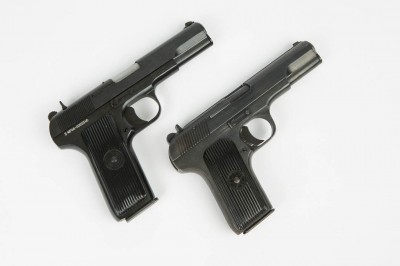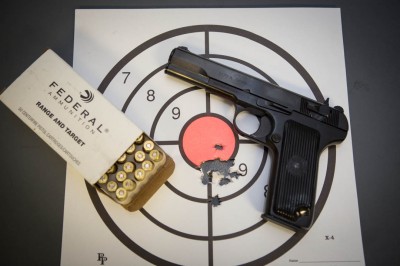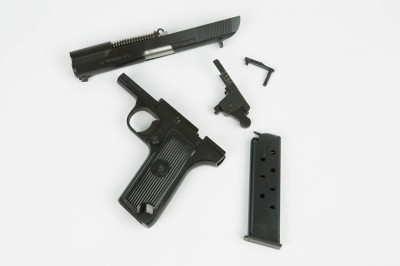Rethinking a Classic: The Zastava M70A Tokarev
The Bang Switch 06.26.13

I’m a sucker for a classic military firearm. I’m an even bigger sucker for a classic firearm that’s chambered, or in this case rechambered, for 9mm–which is my favorite handgun caliber.
The TT-33 Tokarev is one of the more prominent handguns of the 20th century, being found on modern battlefields around the globe despite the fact the aging pistol was designed back in the 1930s by the Russian firearms designer Fedor Vasilievich Tokarev. The Tokarev pistol, as it’s come to be known, was originally chambered in the potent 7.62x25mm bottle-necked cartridge. The TT-33 replaced the 1895 Nagant revolver in service in 1930 as the TT-30. Soon after its adoption a simplified version was released in 1933 and was thus named the TT-33. The TT-33 would serve the Russian military until the 1950s when it was replaced by the Makarov PM.
TT-33s have been manufactured in many countries including Russia, China, Romania, Serbia (formerly Yugoslavia), Algeria, Egypt, Iraq, North Korea, and more. Some of these have found their way into the U.S. as military surplus firearms, mostly in the 7.62x25mm caliber. At one time China exported the 9mm Tokarev Model 213 to the U.S., but those dried up years ago and can be hard to find today (at one time 7.62x25mm was abundant and dirt cheap but those days are long since gone). With the shortage of surplus 7.62x25mm ammo in the U.S., the Serbian gun maker Zastava saw an opportunity to bring their M70A 9mm Tokarev into the U.S.

The M70A is, for the most part, a faithful clone of the original Russian TT-33, but there are some notable differences. I’ll start off with the most obvious difference: the M70A has a slightly longer grip than the TT-33, which allows it to carry one additional round of ammunition as compared to the Chinese 213 9mm pistol that features the standard-length grip frame. The extended grip gives the M70A a very different feel than a conventional TT-33, and I think it improves the feel and shootability of the pistol considerably. The TT-33’s grip is very short for my Yeti hands, not so with the M70A.
Next on the list of changes from the original TT-33 design is something I dislike, that being a magazine safety. If you remove the magazine from the pistol the weapon can not be fired. As with all things mechanical, this can be removed if you have the necessary skills, however I advise against removing factory safeties (that’s what my lawyer wants me to say).
One of the changes that can be viewed as good or as bad is the addition of a safety. The original TT-33 lacked a manual safety of any sort and instead relied upon a positive half-cock position on the hammer. Personally, I prefer the original design, but then I’m goofy like that.
While the slide-mounted safety resembles a more modern hammer drop safety, it is not. With the hammer at rest the safety can be applied by pushing it downward, at which time it rotates a simple firing pin block up and slightly pushes the hammer away from the pin. With the safety engaged you may cock the pistol but you cannot fire it. You can also cycle the action of the pistol with the safety engaged. To fire the weapon, you simply rotate the selector lever up to the fire position and pull the trigger. If the pistol is loaded, pulling the trigger will be followed by a loud bang and a hole magically appearing in something–hopefully the intended target.
Most everything else is pretty much the same as a TT-33 pistol. The entire gun is made from steel, you won’t find any Tupperware parts on this old warhorse–with the exception of the plastic grip panels, which is excusable. The sights are dovetailed on both the front and rear. While this is a desirable trait usually, I’ve not had any luck finding high-quality upgraded sights that fit the pistol.

Like the pistol it is derived from, the M70A uses an external extractor and features familiar controls for U.S. shooters. The slide stop and magazine release are in the expected positions, both easily accessible with the shooting hand thumb. The magazine doesn’t drop free on my pistol and requires a slight coxing before it falls free. The magazine holds nine rounds of 9mm ammo and features windows so you can tell how many rounds are loaded at a glance.
The overall fit and finish of the Zastava made pistol is far superior than most of the surplus import TT-33 and its clones that I’ve seen. It is much nicer than the Romanian pistols and it’s even nicer than my Chinese Model 213. It’s not HK quality by any means, but it is a substantial step up from the average TT-33 I’ve seen on the market.
Shooting the M70A is actually quite entertaining because for me it’s such a different feeling pistol than what I’m used to. The grip angle may feel a little off to you at first, but once you start shooting it I think you’ll agree it actually feels good in the hand. Recoil is mild and the trigger pull is about 6.5 pounds.
My pistol shot just a little low at 15 yards but was capable of producing tight groups using Federal 115gr range ammunition. The sights are typical military sights–they suck for target work. The front blade is small and the notch in the rear sight is narrow and hard to see in poor lighting conditions. The pistol functions well with ball rounds and hollow points, I’ve had no malfunctions of any type with my pistol.
Internally the M70A resembles a mixture of Browning creations, including the 1911 and Hi-Power pistols. The locking mechanism and recoil system is clearly a Browning design. If you’ve ever field stripped a 1911 or Hi-Power you will quickly figure out how to tear down the M70A.

The only real difference between the M70A and, say, the Browning Hi-Power in how you strip it is the retainer clip used to hold the slide stop pin in the pistol. To disassemble, you’ll check to make sure the weapon is clear, then push the retaining clip back thereby releasing the slide stop pin. Slightly pull back on the slide, push the pin out and ride the slide off the frame of the handgun. You can then remove the recoil spring, guide rod, and barrel, much like you would either the Hi-Power or 1911.
Another difference is that the trigger group is modular in the M70A. Once you have the slide off the frame, you can grab the sub-assembly holding your sear and hammer then simply pull it up and out of the frame, no pins are holding it in. This facilitates quick and easy cleaning and inspection of the trigger assembly and it’s something I believe is an improvement over the Browning designs.
The Zastava M70A is being imported by Century Arms and has a MSRP of $299. I was able to pick mine up for about $260, making it one heck of a good deal. Century is also importing the 7.62x25mm version of this pistol and it’s being offered at the same price. If you’re thinking about picking up an affordably-priced classic military pistol that could double duty as a defensive arm, you might want to give the Zastava M70A 9mm a gander.
Originally posted at TheBangSwitch, republished with permission.

